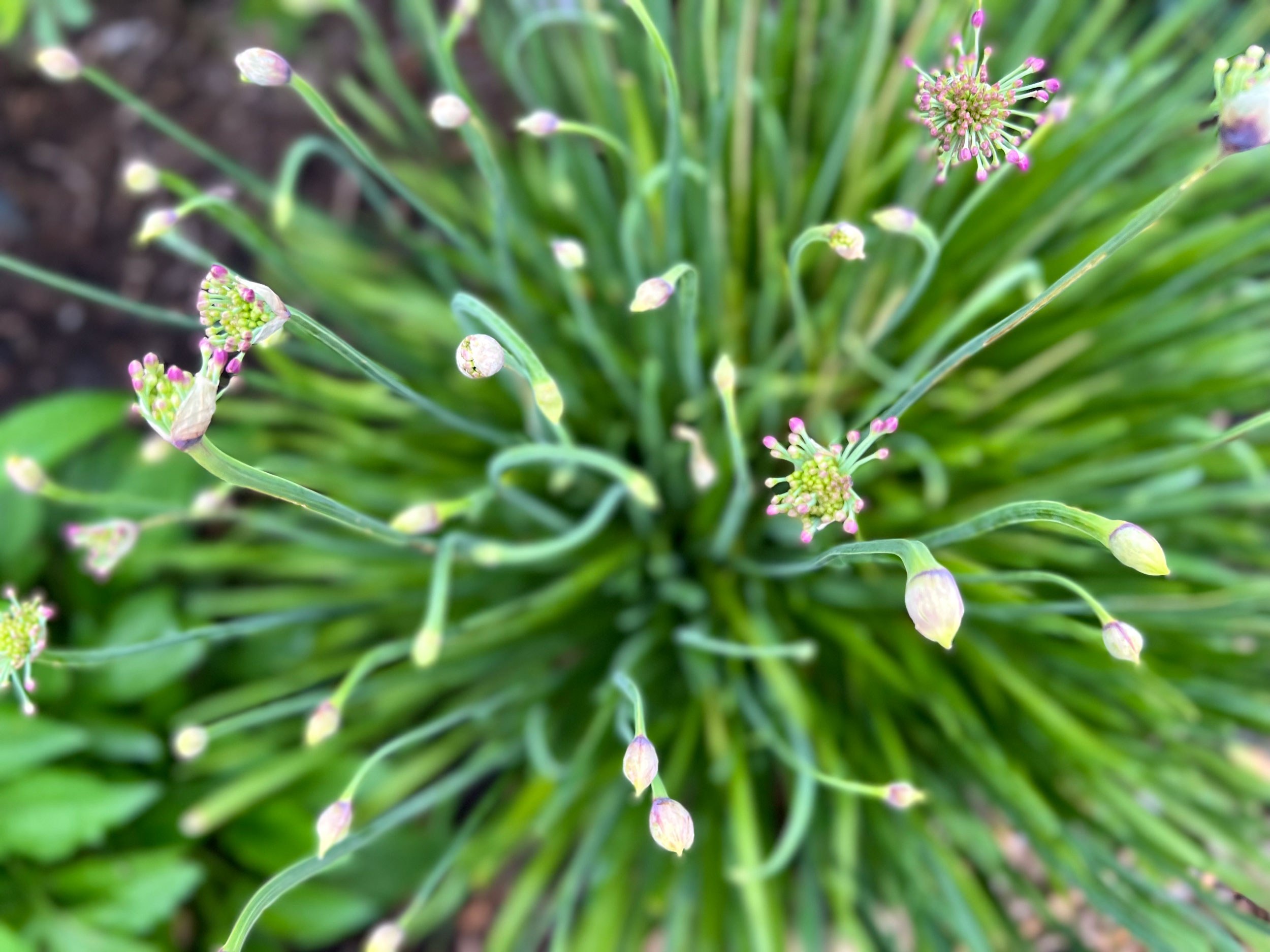Nodding Onion
The Nodding Onion, Allium cernuum, is a captivating perennial native to North America, distinguished by its elegant, drooping flower clusters. Part of the Allium genus, which includes garlic, onions, and chives, this particular species not only adds ornamental charm to gardens but is also edible. Its taste, reminiscent of the culinary onion, combined with its aesthetic appeal, makes it a delightful choice for both gardeners and foragers.

More on Nodding Onion
About
The Nodding Onion grows with long, narrow, grass-like leaves, reaching up to 1.5 feet in height. Its name stems from the unique umbels of star-shaped flowers that hang or "nod" downwards, typically showcasing a delicate pink hue, though they can also appear in white.
Adapted to a variety of conditions, Allium cernuum can be found in open woods, prairies, and even rocky terrains. They prefer well-drained soils and can thrive in both full sun and partial shade. As with other members of the Allium family, both the bulbs and leaves of the Nodding Onion are edible, offering a mild, sweet onion flavor.
History
Nodding Onion holds historical significance among Indigenous peoples of North America, who utilize the plant for culinary and medicinal purposes. It is consumed fresh, cooked, or even dried for later use. Medicinally, various Native American tribes utilize Allium cernuum as remedies for ailments such as colds, croup, and even as an insect repellent.
As European settlers arrived and began exploring the continent's flora, the Nodding Onion's ornamental beauty made it a sought-after choice for gardens, and its edible nature expanded its utility.
Ways To Cook
The delicate taste of the Nodding Onion provides a range of culinary applications:
- Raw: The bulbs and leaves can be minced and sprinkled over salads for a mild onion flavor.
- Sautéed: Much like green onions or chives, Nodding Onion can be sautéed and served as a side dish or incorporated into main dishes.
- Pickled: The bulbs can be pickled, offering a zesty treat to accompany meals.
- Soups & Stews: They can be diced and added to soups or stews for depth of flavor.
- Breads & Muffins: Chopped leaves can be incorporated into breads or muffins for a subtle onion taste.
- Garnish: The delicate flowers, while more commonly used ornamentally, can also serve as an edible garnish for certain dishes, adding a touch of elegance.
It's crucial, especially for those foraging in the wild, to be able to accurately identify Nodding Onion and differentiate it from other potentially toxic plants. Proper identification ensures safe and enjoyable culinary use.
